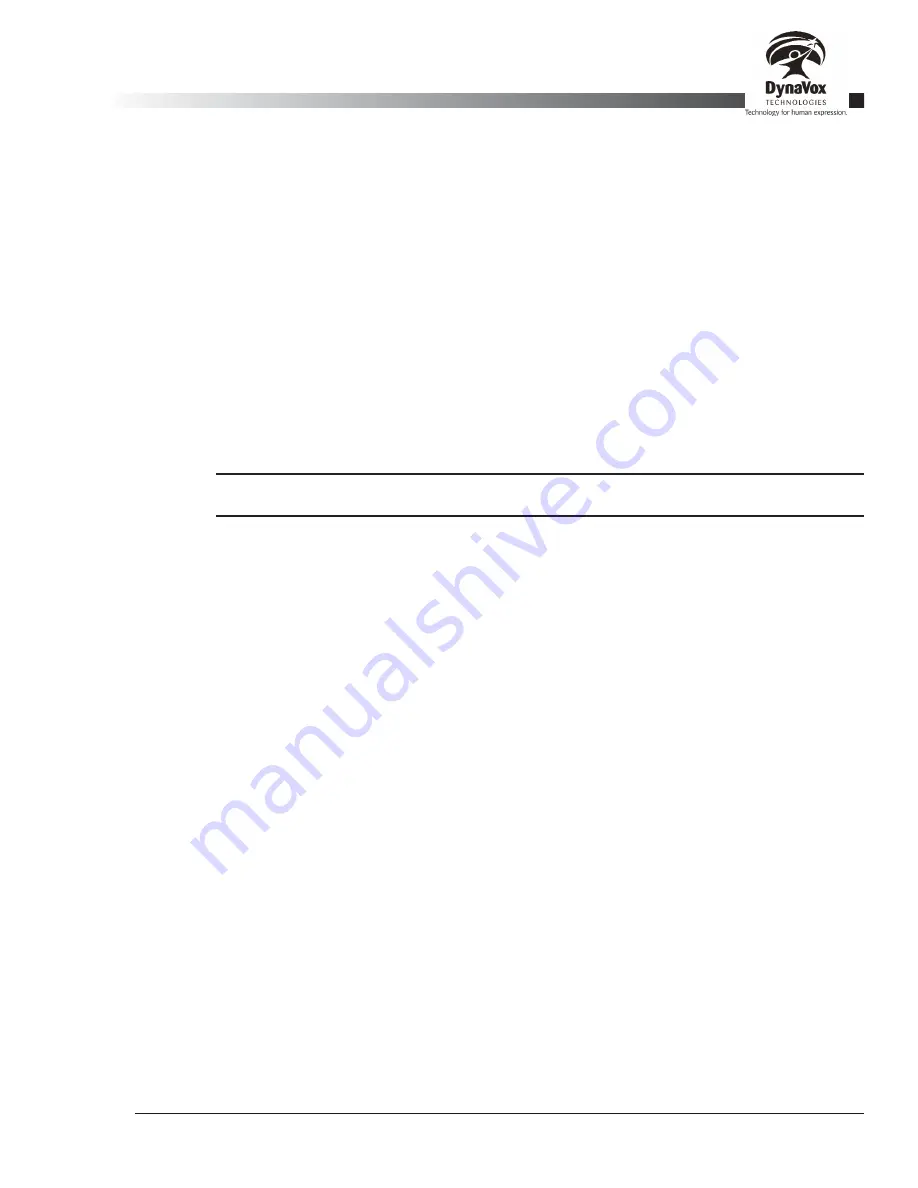
Palmtop3 User’s Guide
Part # 400670-A
67
If you select
Clear Button
, the button contents will be erased but you will not be able to paste the cleared
button somewhere else later. Selecting
Edit Button
is equivalent to double-selecting the button - the
Button
Properties
dialog will appear so that you can edit the button (see section 4.19).
You can hide (or show) individual buttons by selecting the
Hide Button
(or
Show Button
) popup menu
items. This is the equivalent of checking (or unchecking) the
Hide Button
box in the
This Button
tab of the
Button Properties
dialog (see section 4.19.10). A hidden button will be invisible, but can still be selected
while in Edit Mode. In Run Mode, a hidden button is both invisible and unselectable.
The popup menu also includes an
Undo
option that enables you to reverse the effects of the last button
editing command. This menu item is only enabled for the single button that was most recently edited. After
you have used
Undo
on a button, you can use
Redo
to restore the button changes. The
Undo
and
Redo
options will not work if you change pages or if you leave Edit Mode and then return.
In the PC Editor software, you can use the familiar Windows shortcuts to cut, copy, and paste the contents of
the buttons, and to undo the previous action. Move the mouse over the target button and press
Ctrl+C
to
copy,
Ctrl+X
to cut,
Ctrl+V
to paste, and
Ctrl+Z
to undo or redo the last action. Additionally, you can use
Ctrl+B
to perform the
Paste Look
function and
Ctrl+H
to hide or show a button.
Note:
You cannot cut and paste between the PC Editor and other applications.
If you are using the PC Editor, you can position the mouse over a button and use the PC keyboard to
append text to the button label (and message) without having to go into the
Button Properties
dialog.
Pressing the
Enter
key on the keyboard will erase the label of the button.
5.1.4. Adding a New Page
To add a new page to a configuration you can either select the
Add Page
icon from the toolbar (see Figure
6) or select
View > Page Editing > Add Page
. In either case, a dialog will open and request information
about the new page. You can type out a name for the new page or use the default name suggested by your
Palmtop device. You will also have to select an option in the
Page Type
drop-down menu that indicates the
size of the button grid on that page (for example,
2x2
or
4x4
). After you select
OK
, a blank page will be
created and you will be back in Edit Mode.
You can also create a new page while editing a navigation button in the
Button Properties
dialog. This can
be very convenient since you often do not realize that you need a new page until you are editing the button
that will link to it. To add a page from the
Button Properties
dialog, simply select
<New Page>
from the
Navigate
drop-down menu, then enter the page name and layout as above (see section 4.19.6).
If you want to create a copy of the current page, select
View > Page Editing > Duplicate Page
. You must
specify a new name for the page in the
Name of New Page
box, but you cannot specify a page type - it must
be of the same type as the page that is being copied. After selecting
OK
, you will be returned to Edit Mode
on the new page. Because you duplicated the page you were on, it may not look like the screen changed at
all. However, you can identify the current page by looking at the page name shown in the Edit Mode toolbar
(see Figure 10).
2
Summary of Contents for iChat3
Page 2: ...ii DynaVox Technologies ...
Page 4: ...iv DynaVox Technologies ...
Page 22: ...10 DynaVox Technologies ...
Page 86: ...74 DynaVox Technologies ...
Page 122: ...110 DynaVox Technologies ...















































